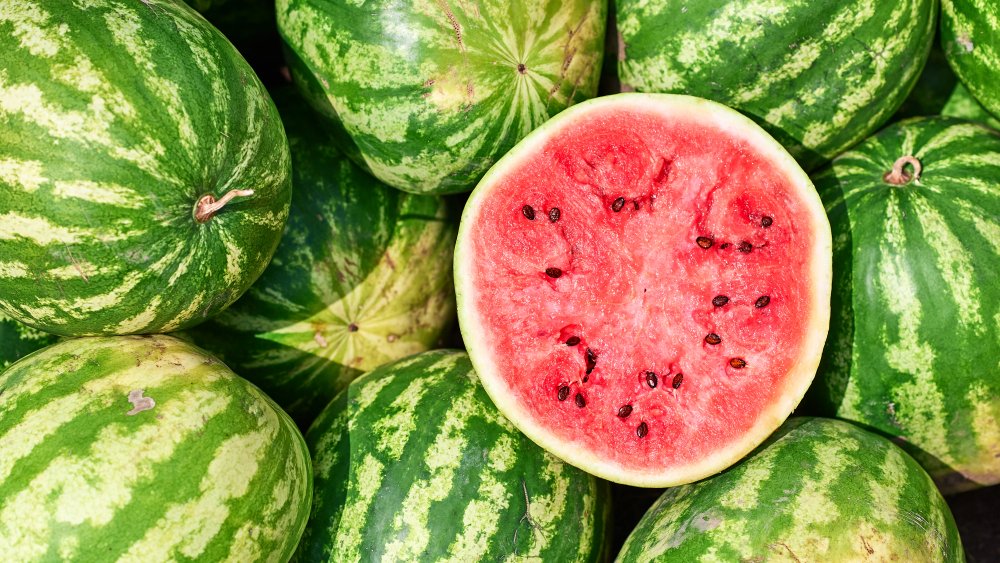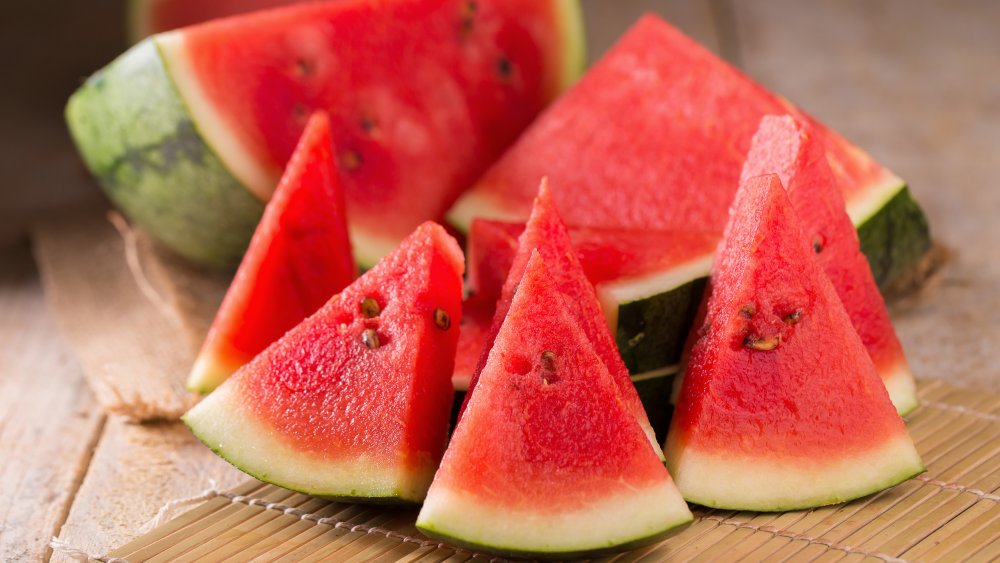Here's The Secret To Picking A Perfectly Ripe Watermelon
One of the best things about summer is finally being able to eat all the perfectly ripe, in-season fruit. Any other time of the year, watermelon is just okay — really living up to the "water" part of its name — but for a few short weeks in the summer, watermelons transform from a pretty meh snack into bright red, flavor-packed treats that are (dare we say it?) maybe even better than ice cream. The only caveat is, you have to know how to pick the right one. Choose wrong, and you could end up with a watermelon that is overripe and mealy or totally flavorless and rock hard.
The Kitchn recommends some super helpful signs to look out for to guide you through the all-too-short watermelon season. They say the first factor to check for when finding a ripe watermelon is the weight. No matter what size your melon is, it should feel heavier than you would expect it to be. Another suggestion, although a little trickier to gauge, is knocking on the watermelon to see if it sounds hollow. Under or overripe watermelons will sound dull when you tap on them.
There are a few visual cues which indicate a ripe watermelon
Still not sure if the watermelon you're considering is ripe? Food52 offers another indicator to search for to ensure you pick the best one. They say that a good way to check if a watermelon has had enough time on the vine to fully ripen is to turn it over and look for a yellow and brown colored patch. This signifies that the melon spent a significant amount of time lying in the sun on the ground. If the spot is white in color (or non-existent), find a new watermelon.
If you need some more visual clues to tell if your watermelon is ripe, Real Simple states that the best watermelons are probably not the prettiest ones at the market. Not only should the stem be dry and brown (a melon with a green stem likely did not have enough time on the vine,) spots and webbing lines are also a good sign that the fruit will be sweet. The outlet states that this is because these marks show where the sugars have begun to seep out of the fruit. Watermelons with dull, striped rinds are also generally a good choice. The stripes should be consistently patterned and alternate between a dark green color and a pale, creamy yellow. They say that shiny melons are probably underripe, so don't choose the one you think is the most visually appealing if you're looking for the best flavor.

